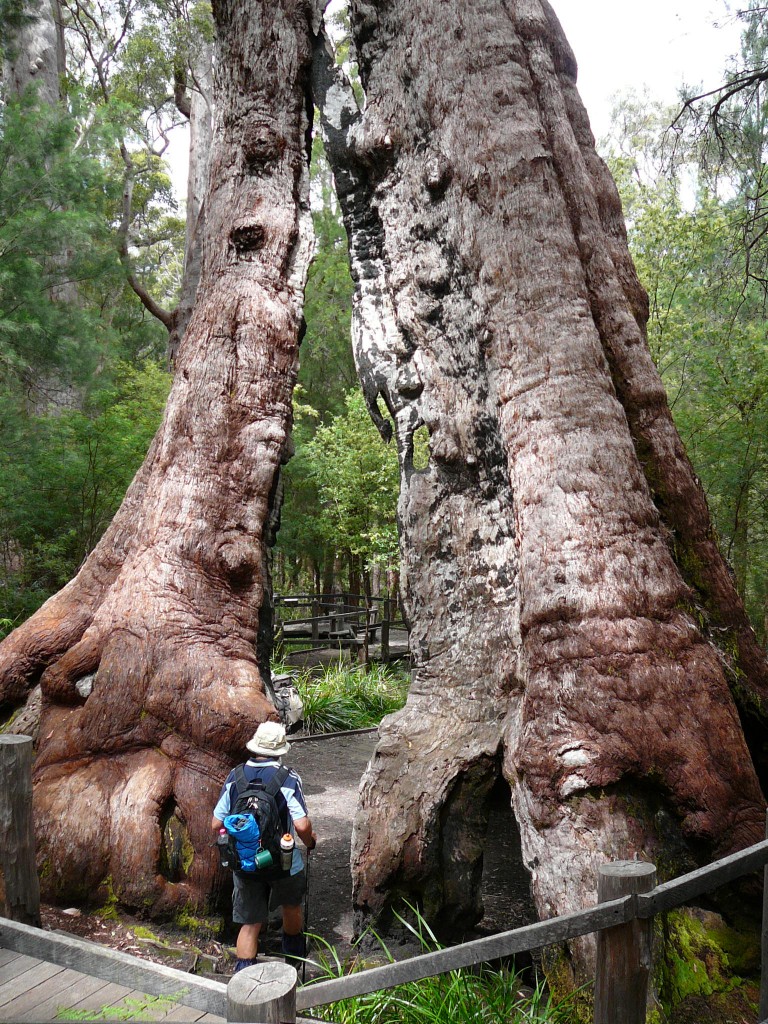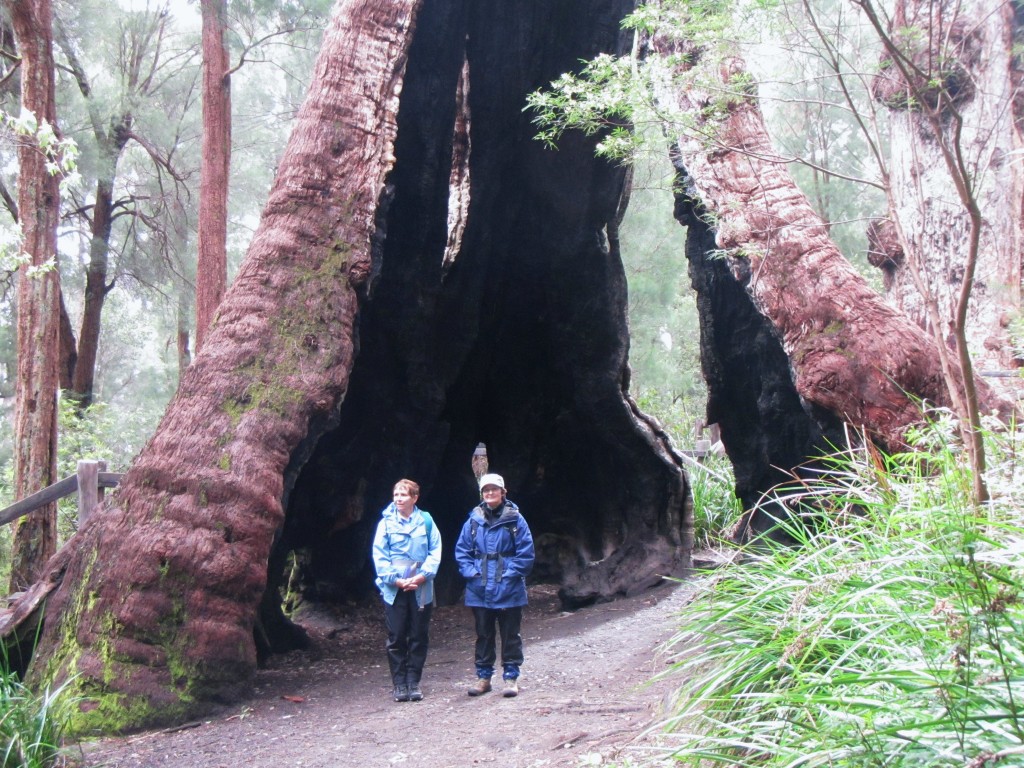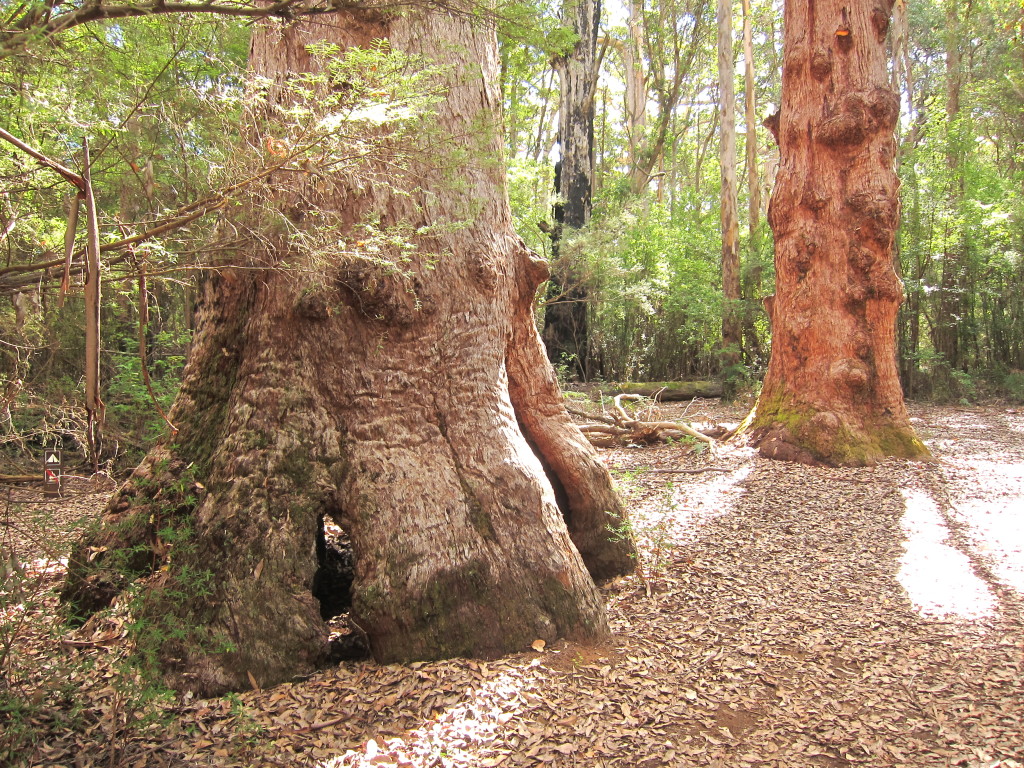The Red Tingle Tree, also known as the Eucalyptus jacksonii, is a unique species of tree that can be found in the southwestern region of Western Australia. What makes this tree particularly special is its massive size, with some specimens reaching up to 75 meters tall and 20 meters in circumference. In addition, the Red Tingle Tree has a lifespan of over 400 years and can survive in the harsh, fire-prone environment of its natural habitat. Its beautiful red-brown bark and lush green foliage make it a sight to behold, and it serves as an important source of food and shelter for local wildlife. The Red Tingle Tree is truly a natural wonder and a symbol of resilience and strength in the face of adversity.

The trees have very shallow root and are often hollowed out by fire. The resulting cavern can be so wide that tourist of a bygone era would often pose with their cars parked inside one of these special trees!

Now parking a car inside a tree with shallow roots, and susceptible to erosion is a pretty bad idea, so the practise is long since banned.
The distribution of tingle trees is very limited. Since the last ice age (about 6.5 thousand years) rainfall has decreased in the south west, and the tingles only manage to cling on, on the tops of hills that receive more than 1200mm of rainfall.
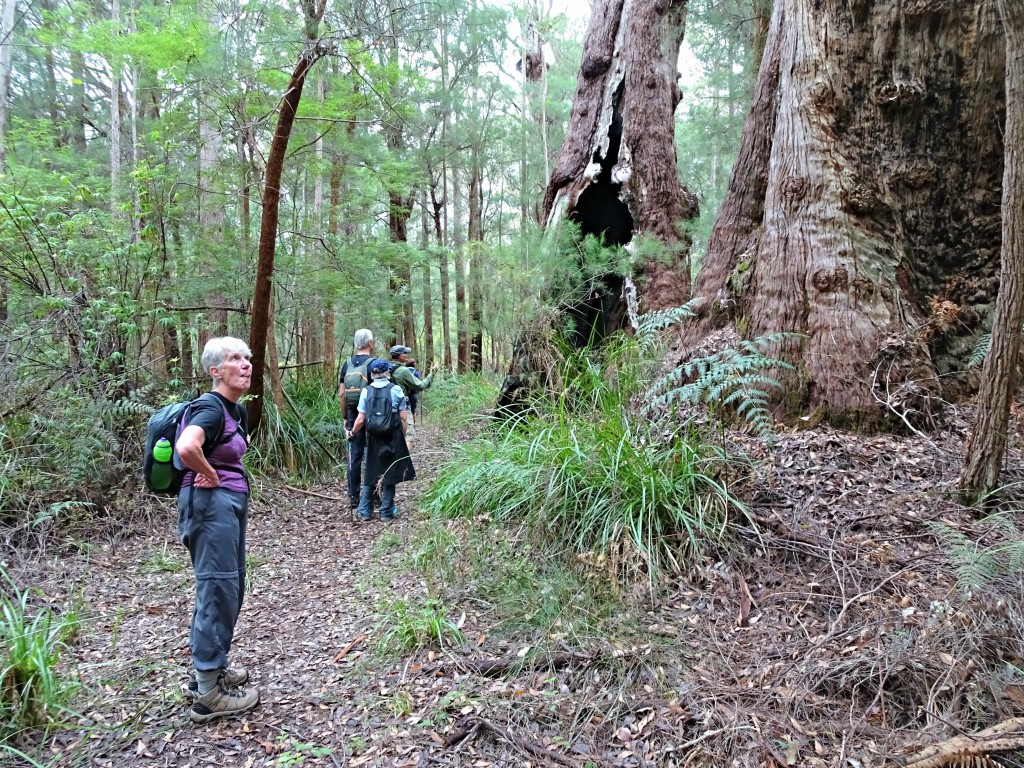
This interesting species is also very long last. Tingle trees can live for more than 400 years, which is exceptional given the frequency of forest fires in the south west. The word “tingle” is believed to be similar for the aboriginal name for the species. This part of the Australia is the traditional land of the Bibbulmun people of the Nyungar nation.
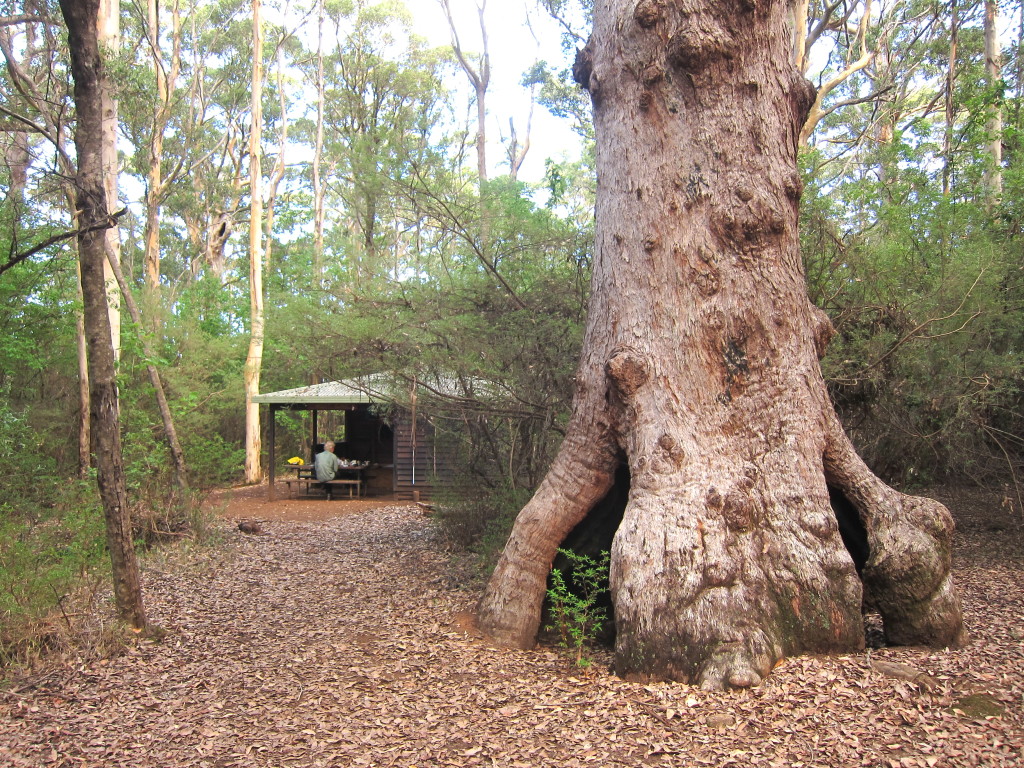
There are two other species of tingle trees, the yellow tingle (Eucalyptus guiltoylei), and Rate’s tingle (Eucalytus brevistylis) both of which do not have the giant hollowed out caverns like the red tingle.
If you would like to see Tingle trees on an active adventure, our Walpole to Denmark tour on the Bibbulmun Track, passes right through their home land. I think you will agree, they are a stunning part of nature.
